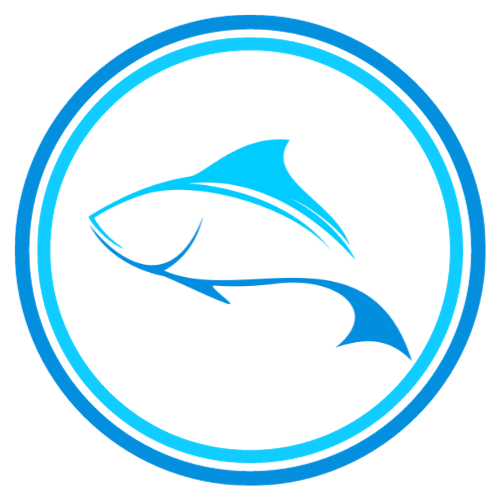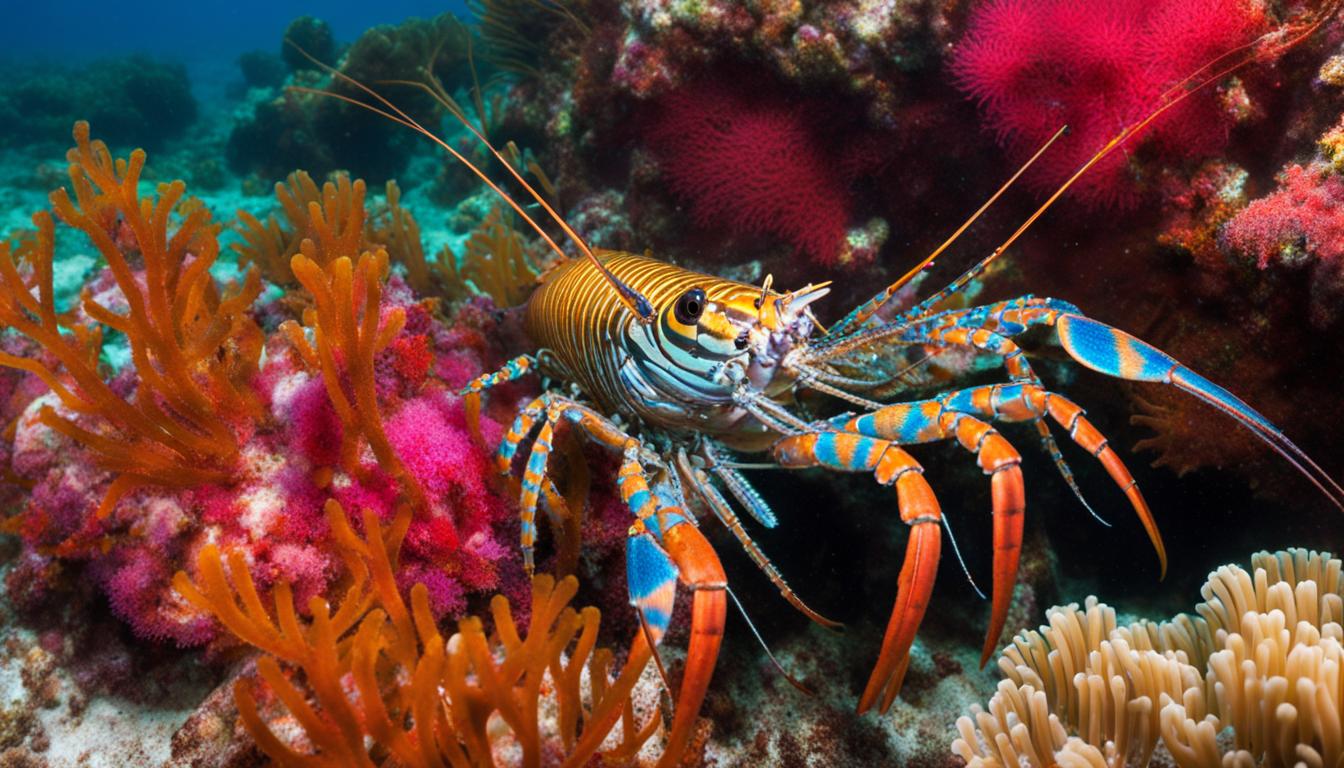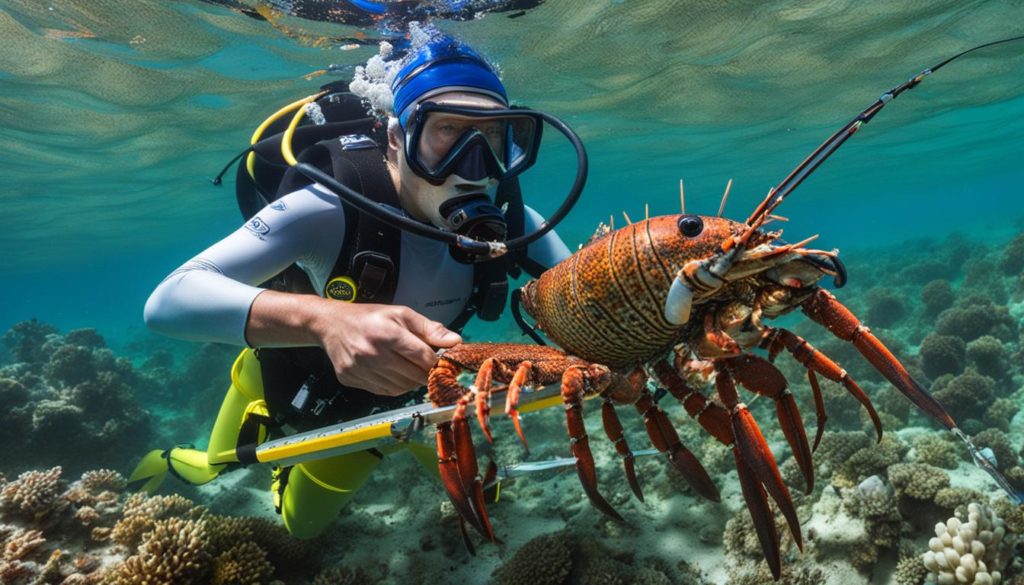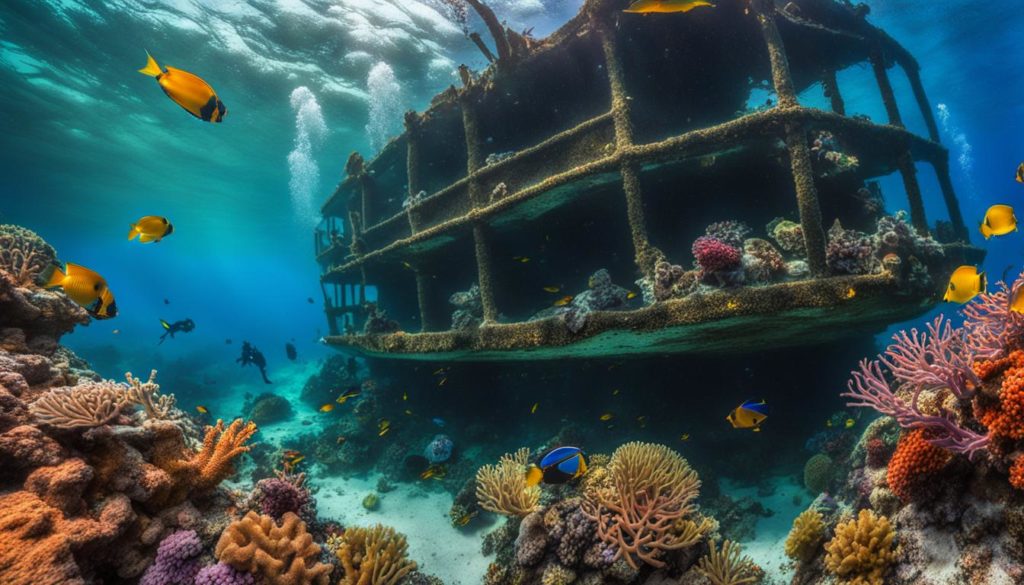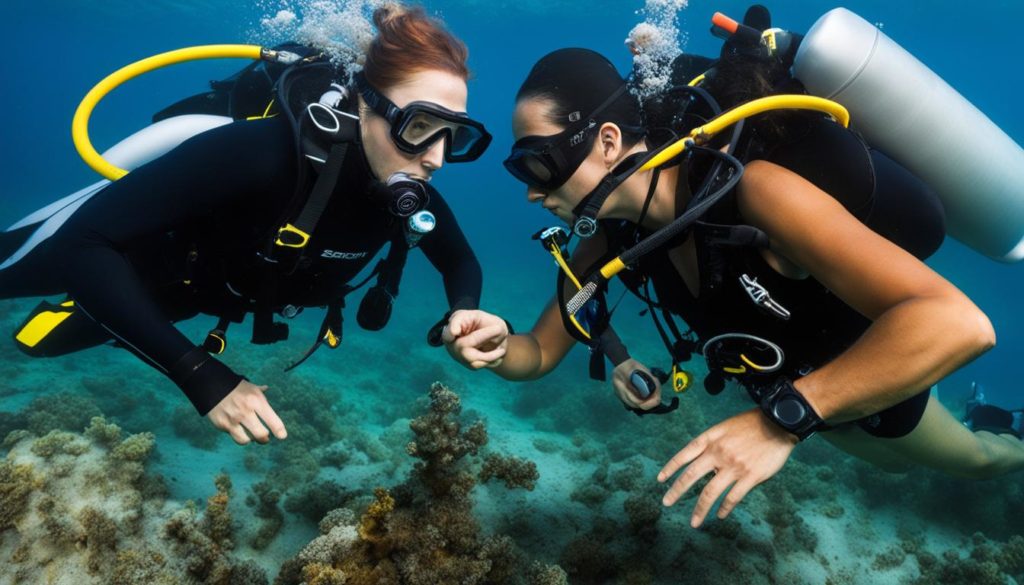Florida is known for its abundant spiny lobster population, making it a prime destination for lobster hunting enthusiasts. Whether you’re a novice or a seasoned lobsterer, this guide will provide you with valuable tips and techniques to improve your catch. From finding the best spots to understanding the regulations and selecting the right gear, we’ve got you covered.
Before embarking on your spiny lobster adventure in Florida, it’s essential to know where to find them. Scouting for productive areas and identifying clues, such as bare spots on rock ledges or specific fish species that indicate lobster hideouts, can significantly increase your chances of success.
When it comes to gear and techniques, choosing the right tools is crucial. Snares, nets, and tickle sticks are commonly used for capturing spiny lobsters. Learning the techniques of tightening loops, herding lobsters, and gently blocking their retreat will greatly enhance your chances of a successful catch.
Experienced lobster hunters have shared valuable tips, such as covering more territory and learning to judge lobster size underwater. Taking the time to scout hideaways and releasing undersized lobsters also contributes to the sustainability of the population.
It’s important to familiarize yourself with the lobster diving regulations in Florida to ensure compliance. The sport season and regular season have specific dates, bag limits, and size limits that must be followed. Obtaining the necessary licenses is also essential to avoid fines and penalties.
Florida offers various locations for lobster diving, including the Florida Keys, the Gold Coast, and the east coast. Each location has its advantages and unique spots that yield good catches.
Having the right tools is essential for successful lobster hunting. A lobster gauge, mesh game bag, dive light, dive flag, short-handled lobster net or tail snare, tickle stick, and gloves are among the must-have gear for catching spiny lobsters.
When it comes to catching and handling spiny lobsters, a gentle approach is key. Nudging the lobster with a tickle stick, minimizing sudden movements, and grabbing it by the body ensure the well-being of the lobster and the sustainability of the population.
If you’re a beginner, take the time to familiarize yourself with the regulations, practice your diving skills, and approach the lobsters slowly and calmly. With practice and experience, you’ll become more adept at catching these elusive creatures.
Key Takeaways:
- Scout for productive areas and look for clues indicating lobster presence.
- Use the right gear and techniques, such as snares, nets, and tickle sticks.
- Follow tips from experienced hunters, including covering more territory and releasing undersized lobsters.
- Be aware of the lobster diving regulations in Florida and obtain the necessary licenses.
- Explore various locations for lobster diving, such as the Florida Keys and the Gold Coast.
Finding the Best Spots to Catch Spiny Lobsters in Florida
Before you can catch spiny lobsters in Florida, you need to know where to find them. Preseason scouting can help you locate productive areas, but there are also clues that indicate the possibility of their presence. Look for bare spots on rock ledges or certain species of fish that may give away a crawfish hideout. Certain habitats, such as those where porkfish or cubbyus are found, often attract spiny lobsters. By identifying recurring patterns in the places you dive, you can increase your chances of success.
Exploring the Florida Keys can lead you to some of the best spots for spiny lobster hunting in Florida. Monroe County, in particular, boasts the largest population of lobsters in the state and offers rich lobster hunting grounds. The reefs in this area account for about 70% of all lobsters collected in Florida. The Gold Coast, which includes Dade, Broward, and Palm Beach, is also known for its abundant lobster population. Additionally, the east coast of Florida, from Vero Beach to Jacksonville, has hidden gems that locals have discovered for successful lobster diving.
“Florida’s diverse coastline provides various opportunities for lobster hunting, but it’s essential to study the behavior and habits of spiny lobsters. Look for signs of their presence and explore known hotspots to increase your chances of catching these coveted crustaceans.”
To assist in your lobster hunting adventure, refer to the table below for additional top locations to catch spiny lobsters in Florida:
| Location | Notable Features |
|---|---|
| Florida Keys | Abundance of lobsters, diverse reef systems |
| Gold Coast | Dade, Broward, and Palm Beach, rich lobster hunting grounds |
| East Coast | Vero Beach to Jacksonville, hidden lobster diving spots |
Florida’s diverse coastline provides various opportunities for lobster hunting, but it’s essential to study the behavior and habits of spiny lobsters. Look for signs of their presence and explore known hotspots to increase your chances of catching these coveted crustaceans.
Gear and Techniques for Catching Spiny Lobsters in Florida
When it comes to catching spiny lobsters in Florida, having the right gear and using the right techniques are essential. Some common gear includes snares, nets, and tickle sticks. Snares are loops that can be tightened around the lobster, while nets are used to herd lobsters into a specific area. Tickling is a popular method, where a tickle stick is used to gently block the lobster’s retreat and then grab it with a gloved hand. Using the right techniques and gear can greatly improve your chances of catching spiny lobsters.
| Equipment | Description |
|---|---|
| Snares | Loops used to tighten around the lobster. |
| Nets | Used to herd lobsters into a specific area. |
| Tickle Sticks | Gently block the lobster’s retreat and then grab it with a gloved hand. |
In addition to the gear, there are various techniques that can help increase your success rate. One technique is to use a hula hoop to corral the lobsters into a confined area before capturing them. Another technique is to position yourself up current from the lobsters and allow the current to push them towards you. This can make it easier to catch them as they swim towards you. It’s also important to be patient and observant, as lobsters can be quite elusive and may hide in crevices or under rocks. By honing your skills and using the right gear and techniques, you can enhance your lobster-catching abilities.
Remember, spiny lobster fishing in Florida requires a license, and there are regulations in place to protect the population. Make sure to familiarize yourself with the rules and follow them to ensure the sustainability of the spiny lobster population. Happy lobster hunting!
Tips for Successful Spiny Lobster Hunting in Florida
If you want to improve your spiny lobster hunting game in Florida, here are some tips to increase your chances of success:
1. Master the Techniques
Learning and practicing effective spiny lobster hunting techniques is key to a successful catch. Use a tickle stick made from PVC tubing to gently block the lobster’s retreat and then grab it with a gloved hand. Approach the lobsters slowly and avoid making sudden movements that could startle them. Scouting the layout of their hideaways beforehand can also give you an advantage.
2. Cover More Territory
Avoid distractions and cover more territory while hunting for spiny lobsters. By staying focused and exploring different areas, you increase your chances of finding active lobsters. Take your time to observe their behavior and locate their hiding spots, as they can be excellent at camouflage. Don’t give up if you don’t find any right away; patience and persistence pay off in lobster hunting.
3. Use Proper Gear
Having the right gear is crucial for successful spiny lobster hunting in Florida. Make sure to have a lobster gauge to measure the lobsters underwater and release any undersized ones. A mesh game bag is essential for safely storing your catch. A dive light will improve visibility, especially when exploring crevices and dark areas. And don’t forget your gloves for protection!
4. Follow Regulations
Always abide by the spiny lobster fishing regulations in Florida to protect the population and ensure sustainable hunting practices. Familiarize yourself with the Florida Lobster Sport Season and the Florida Lobster Regular Season, including bag limits, possession limits, and size limits. Obtain the necessary licenses to avoid fines and penalties.
By following these tips and honing your skills, you can increase your chances of a successful spiny lobster hunting expedition in the beautiful waters of Florida.
Lobster Diving Regulations in Florida
When it comes to lobster diving in Florida, it’s important to be aware of the regulations in place. These regulations are designed to protect the spiny lobster population and ensure its sustainability for future generations. Understanding and adhering to these rules is crucial for responsible lobster hunting. The following table provides an overview of the key regulations:
Lobster Seasons in Florida
| Lobster Season | Dates |
|---|---|
| Florida Lobster Sport Season | Last consecutive Wednesday and Thursday of July |
| Florida Lobster Regular Season | August 6th to March 31st |
Bag Limits and Size Limits
Florida has specific bag limits and size limits in place to regulate the number and size of lobsters that can be harvested. These limits help maintain the lobster population and allow for sustainable lobster hunting. The following table provides an overview of the bag limits and size limits:
| Lobster Type | Bag Limit | Size Limit |
|---|---|---|
| Spiny Lobster | 6 per person per day | Minimum carapace length of 3 inches |
Lobster Possession Limits
In addition to bag limits, there are also possession limits in place to prevent over-harvesting. The possession limit refers to the maximum number of lobsters an individual can possess at any given time, regardless of where they were harvested. It’s important to abide by these rules to avoid fines and penalties. The possession limit for spiny lobsters in Florida is 6 per person.
By familiarizing yourself with these lobster diving regulations, you can ensure a responsible and sustainable lobster hunting experience in Florida.
Best Locations for Lobster Diving in Florida
Florida offers an array of exciting locations for lobster diving. From the beautiful Florida Keys to the golden coasts and the hidden spots along the east coast, there are plenty of opportunities to explore and hunt for spiny lobsters.
The Florida Keys, particularly Monroe County, stands out as a top destination for lobster diving. The reefs in this area are known to have the largest population of lobsters in Florida, making it a favorite spot for many divers. In fact, approximately 70% of all lobsters collected in the state are found in Monroe County.
The Gold Coast, which includes Dade, Broward, and Palm Beach, is also worth a visit. This region boasts rich lobster hunting grounds and provides divers with the chance to catch some impressive specimens.
For those seeking less crowded areas, the east coast of Florida from Vero Beach to Jacksonville offers secret spots that locals know and cherish. These hidden gems can yield good catches and provide a unique diving experience for adventurous lobster hunters.
Exploring these diverse and captivating locations will not only allow you to immerse yourself in the beauty of Florida’s underwater world but also increase your chances of having a successful lobster diving adventure.
Essential Tools for Lobster Hunting in Florida
When it comes to successfully hunting spiny lobsters in Florida, having the right tools is essential. Here are some of the essential tools you’ll need for a successful lobster hunting expedition:
Lobster Gauge
A lobster gauge is a must-have tool for measuring the size of the lobsters you catch. It helps you determine whether a lobster is within the legal size limit, as defined by Florida’s lobster fishing regulations.
Mesh Game Bag
A mesh game bag is essential for safely storing your catch while you continue your dive. The mesh material allows water to drain out, while keeping the lobsters secure. Make sure to choose a bag that is large enough to accommodate the size of the lobsters you expect to catch.
Dive Light
A dive light is crucial for providing visibility when hunting for lobsters in darker or deeper waters. It illuminates the area, allowing you to spot hiding spots and locate lobsters more easily. Invest in a high-quality dive light that is durable and waterproof.
Dive Flag
A dive flag is essential for your safety while lobster hunting. It signals to other boaters that there are divers in the area, helping to prevent any accidents. Make sure to attach the dive flag to a buoy or float that is visible and positioned above the water’s surface.
Short-Handled Lobster Net
The short-handled lobster net is a versatile tool that can be used to capture lobsters in tight spaces. Its compact size allows for easy maneuvering, making it ideal for catching lobsters in crevices and rock formations. Choose a net with a sturdy frame and a deep bag for a secure catch.
Tail Snare
A tail snare is a specialized tool designed to capture lobsters by lassoing their tail. It allows you to safely handle lobsters without injuring them or yourself. Familiarize yourself with the proper technique for using a tail snare to ensure a successful capture.
Tickle Stick
A tickle stick is a popular tool used to encourage lobsters out of their hiding spots. It is typically made from a durable material, such as PVC tubing, and features a pointed end for gentle prodding. The tickle stick allows for precise control when coaxing lobsters into open water for capture.
Gloves
Gloves are an important safety tool when handling lobsters. They protect your hands from the lobsters’ spiny exoskeletons and help prevent any potential injuries. Choose gloves that are durable and puncture-resistant to ensure maximum protection.
With these essential tools in your lobster hunting arsenal, you’ll be well-equipped to embark on a successful adventure in the waters of Florida. Remember to always follow the regulations, practice responsible fishing, and prioritize the well-being of the spiny lobster population. Happy hunting!
Tips for Catching and Handling Spiny Lobsters
If you’re planning to catch spiny lobsters in Florida, it’s essential to know the best tips for a successful hunting experience. Here are some valuable recommendations to help you catch and handle these elusive creatures.
Tips for Catching Spiny Lobsters in Florida
- Use a tickle stick: Instead of reaching directly for the lobster, gently nudge it towards your hand or net using a tickle stick. This method helps minimize sudden movements that could startle the lobster and make it retreat.
- Maintain a calm approach: Lobsters have compound eyes that can perceive movement. To avoid scaring them away, approach slowly and calmly without making sudden gestures or noises.
- Learn to judge lobster size: Since Florida has specific size limits for spiny lobsters, it’s crucial to develop an eye for estimating their size underwater. Practice observing lobsters while diving to enhance your ability to judge their measurements accurately.
- Release undersized and egg-bearing lobsters: It’s vital for the sustainability of the spiny lobster population to release any undersized lobsters or females carrying eggs. By doing so, you contribute to maintaining a healthy lobster population for future seasons.
Tips for Handling Spiny Lobsters
Handling spiny lobsters requires caution and care to avoid harming the lobster or yourself. Here are some tips to ensure safe and responsible handling:
- Grab the lobster by its body: When handling a spiny lobster, it’s important to grab it firmly by the body to prevent injuring its delicate appendages.
- Never hold the lobster by its antennae or legs: The antennae and legs of spiny lobsters are sensitive and essential for their survival. Avoid grabbing or pulling these parts to prevent harm to the lobster.
- Measure the lobsters accurately: Use a lobster gauge to measure the lobsters underwater. Ensure that they meet the size limits set by Florida regulations before keeping them.
By following these tips for catching and handling spiny lobsters in Florida, you can enhance your hunting skills while contributing to the conservation of this valuable marine resource.
Lobster Diving Tips for Beginners in Florida
If you’re new to lobster diving in Florida, we’ve got you covered with some essential tips to get you started on your spiny lobster hunting adventure. Knowing what to expect and being prepared can make all the difference in your success.
1. Familiarize Yourself with the Regulations
Before you head out into the water, make sure you are aware of the lobster diving regulations in Florida. This includes understanding the lobster sport season and regular season, bag limits, possession limits, and size limits. Familiarize yourself with the rules and obtain the necessary licenses to ensure that you are following the guidelines and avoiding any penalties.
2. Practice Your Diving Skills
Diving for spiny lobsters requires some level of proficiency in swimming and snorkeling. If you’re new to these activities, take some time to practice and build up your skills before attempting to catch lobsters. This will ensure that you are comfortable and confident in the water, allowing you to focus on locating and catching the lobsters.
3. Observe and Approach Slowly
When searching for lobsters, take your time to locate their hiding spots and observe their behavior. Look for signs such as antennae sticking out from rock crevices or burrows in the sand. Approach the lobsters slowly and calmly to avoid startling them. Quick movements can cause them to retreat further into their hiding spots, making them difficult to catch.
4. Be Patient and Persistent
Lobster diving requires patience and persistence. Don’t get discouraged if you don’t catch any lobsters on your first few attempts. It takes time to develop the necessary skills and gain experience. Keep practicing and learning from each dive, and soon you’ll find yourself becoming more proficient in catching these elusive creatures.
Remember, lobster diving in Florida can be an exciting and rewarding activity, especially for beginners. By following these tips, you’ll be well-prepared to embark on your spiny lobster hunting journey. Enjoy the thrill of the hunt and the satisfaction of a successful catch!
Conclusion
Congratulations on completing this comprehensive guide on catching spiny lobsters in Florida! By following the tips, techniques, and regulations outlined in this article, you are now equipped with the knowledge to embark on a successful lobster hunting adventure.
Remember, the key to a fruitful lobster dive is proper preparation. Familiarize yourself with the best spots to find these elusive creatures, select the right gear and techniques, and always adhere to the lobster diving regulations in Florida.
Handling spiny lobsters with care is essential for their well-being and the sustainability of their population. Be mindful of their size, release any undersized or egg-bearing females, and measure your catch accurately using a lobster gauge.
Whether you’re a beginner or an experienced lobsterer, patience and practice are key. Don’t be discouraged if your first attempt doesn’t yield the desired results. With time and experience, you’ll become more proficient at catching these fascinating creatures.
FAQ
Where are the best spots to catch spiny lobsters in Florida?
Spiny lobsters can be found in the Florida Keys, particularly Monroe County, the Gold Coast (Dade, Broward, and Palm Beach), and the east coast from Vero Beach to Jacksonville. These locations offer rich lobster hunting grounds.
What gear and techniques should I use for catching spiny lobsters in Florida?
Common gear for spiny lobster fishing in Florida includes snares, nets, and tickle sticks. Snares are loops that tighten around the lobster, while nets are used to herd the lobsters into a specific area. Tickling is a popular technique, where a tickle stick is used to gently block the lobster’s retreat and then grab it with a gloved hand.
What are some tips for successful spiny lobster hunting in Florida?
Tips for success include covering more territory by avoiding distractions, learning to judge the size of lobsters underwater, using a tickle stick made from PVC tubing, and approaching lobsters without making sudden movements that could startle them. It’s also important to scout the layout of their hideaways before attempting to catch them and to release any undersized lobsters to protect the population.
What are the spiny lobster diving regulations in Florida?
The spiny lobster sport season takes place on the last consecutive Wednesday and Thursday of July each year, while the regular season runs from August 6th to March 31st. Bag limits, possession limits, and size limits vary depending on the location and time of the season. It’s important to familiarize yourself with these regulations and obtain the necessary licenses to avoid fines and penalties.
Where are the best locations for lobster diving in Florida?
The Florida Keys, particularly Monroe County, has the largest population of lobsters and is a popular destination for lobster diving. The reefs in Monroe County account for about 70% of all lobsters collected in Florida. The Gold Coast (Dade, Broward, and Palm Beach) also offers rich lobster hunting grounds. The east coast, from Vero Beach to Jacksonville, has secret spots known to locals that yield good catches.
What are the essential tools for lobster hunting in Florida?
Essential tools for lobster hunting in Florida include a lobster gauge for measuring the lobsters underwater, a mesh game bag for safely storing your catch, a dive light for better visibility, a dive flag for safety, a short-handled lobster net or tail snare for capturing lobsters, a tickle stick to encourage them out of their hiding spots, and gloves for protection.
What are some tips for catching and handling spiny lobsters?
When catching spiny lobsters, it’s best to gently nudge them towards your hand or net using a tickle stick, rather than grabbing or reaching for them. Minimize sudden movements to avoid startling the lobsters, and grab them by the body when handling to avoid causing harm. It’s also crucial to measure the lobsters and release any undersized or egg-bearing females to ensure their well-being and the sustainability of the population.
What are some lobster diving tips for beginners in Florida?
Beginners should familiarize themselves with the regulations and obtain the necessary licenses before attempting lobster diving in Florida. It’s also important to practice diving and snorkeling skills, locate and observe the lobsters’ hiding spots, and approach them slowly and calmly. Don’t get discouraged if your first attempts are not successful; lobster diving takes practice and experience.
